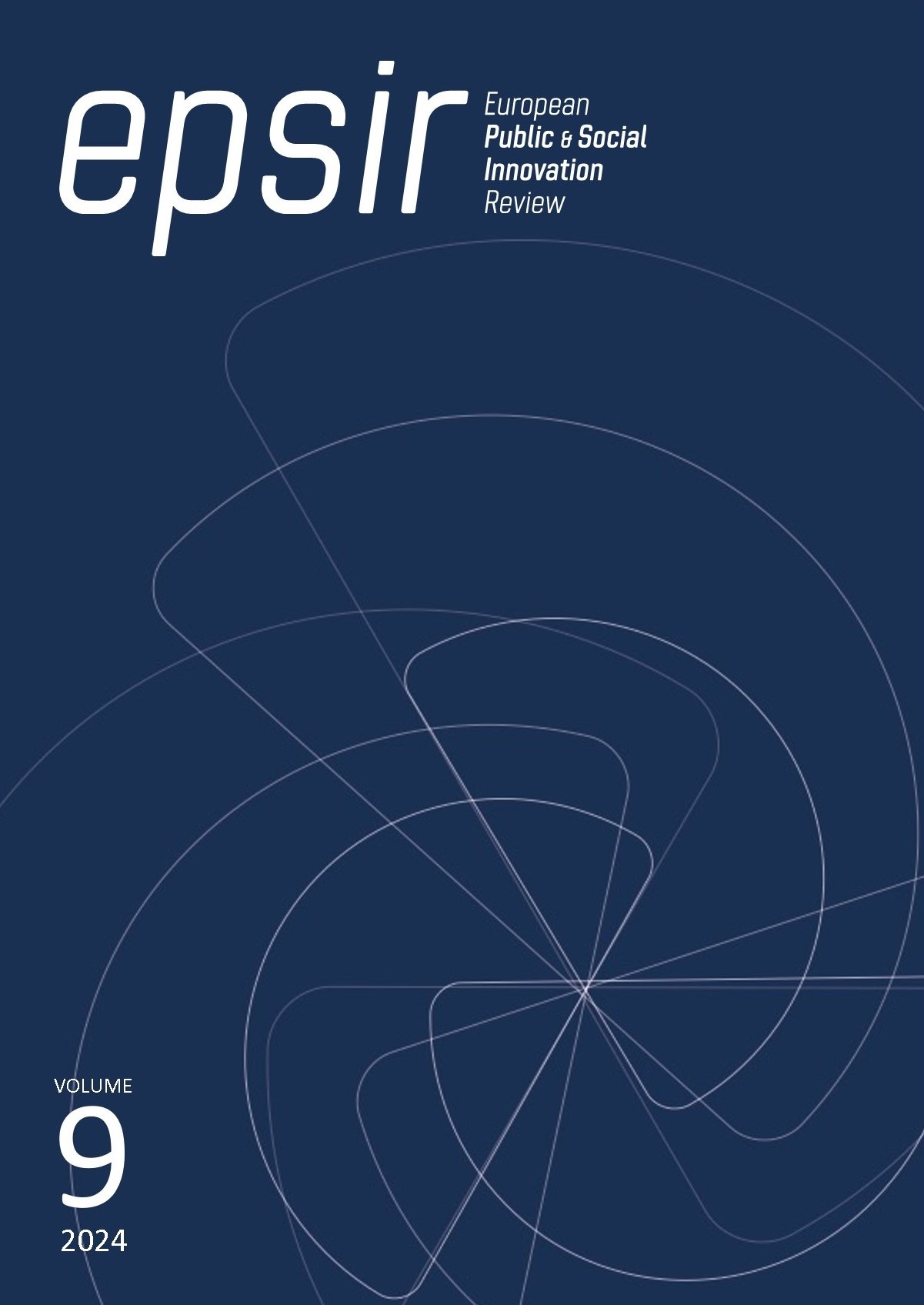China in Latin America: media work ahead of Nicaragua and Ecuador's FTAs between 2022 and 2024
DOI:
https://doi.org/10.31637/epsir-2024-771Keywords:
Free Trade Agreement, diplomacy, communication, China, Ecuador, Nicaragua, foreign policy, journalismAbstract
Introduction: Free Trade Agreements (FTAs) are foreign policy mechanisms that have implications beyond the merely economic. They constitute an effective way to establish communicational actions in the field of public diplomacy. Methodology: This work was developed with a mixed approach that includes content analysis in the media of two Latin American nations in the stages prior to the signing of FTAs between China and Ecuador and Nicaragua between 2022 and 2024, in addition to a study of graphic content related to the FTAs between these countries in news portals with national coverage. Results: In the media studied, it has been shown that media coverage of FTAs with China develops at two rates. On the one hand, in each country, communications on China are almost nil between January 2022 and April 2023. The situation changes from May 2023 to May 2024, when activities between negotiators develop and the presence and openness of Chinese officials in the media intensifies. Discussions: The study provides insight into how China strategically works its media communications before and after FTA negotiations. Conclusions: The research reveals the need to broaden discussions on the effectiveness of public diplomacy when conducting bilateral trade relations processes.
Downloads
References
Acharya, A. (2023). Beijing’s global media offensive: China’s uneven campaign to influence Asia and the world. International Affairs, 99(3), 1357-1359. https://doi.org/10.1093/IA/IIAD083 DOI: https://doi.org/10.1093/ia/iiad083
Baisotti, P. (2024). La ofensiva del encanto de China en América Latina y el Caribe: Un análisis exhaustivo de la estrategia de comunicación de China en la región [Parte II: Influir en los medios de comunicación]. Diálogo Américas. https://bit.ly/3A6FTLa
Bandurski, D. (2016). How Xi Jinping Views the News. China Media Project. https://bit.ly/3YnfYcj
Craig, A. (1976). The Media and Foreign Policy. International Journal, 31(2), 319-336. https://doi.org/10.2307/40201320 DOI: https://doi.org/10.1177/002070207603100206
Hempson-Jones, J. S. (2005). The Evolution of China’s Engagement with International Governmental Organizations: Toward a Liberal Foreign Policy? Asian Survey, 45(5), 702-721. https://doi.org/10.1525/as.2005.45.5.702 DOI: https://doi.org/10.1525/as.2005.45.5.702
Hudson, V. M. y Vore, C. S. (1995). Foreign Policy Analysis Yesterday, Today, and Tomorrow. Mershon International Studies Review, 39(2), 209-238. DOI: https://doi.org/10.2307/222751
Hundt, D. (2015). Free Trade Agreements and US Foreign Policy. Pacific Focus, 30(2), 151-172. https://doi.org/10.1111/PAFO.12048 DOI: https://doi.org/10.1111/pafo.12048
Jaramillo, S. y Tonon, L. (2023). Vista de Ventajas y desventajas de la firma de tratados de libre comercio. Estudios de la Gestión: Revista Internacional de Administración, 14, 155-177. https://revistas.uasb.edu.ec/index.php/eg/article/view/4120/4154 DOI: https://doi.org/10.32719/25506641.2023.14.7
Jihua, Y. y Ocón, D. (2023). Motivations, Policies and Performance: A Review of China’s Culture ‘Going Out’ Strategy. Journal of Asian Public Policy. https://doi.org/10.1080/17516234.2022.2148314 DOI: https://doi.org/10.1080/17516234.2022.2148314
Larsen, H. (2004). Discourse analysis in the study of European foreign policy. Rethinking European Union Foreign Policy, 62-80. https://acortar.link/NNAgMn
Leonard M., Stead C. y Smewing, C. (2002). Public Diplomacy. The Foreign Policy Centre.
Lozano Ascencio, C., Sánchez Calero, M. y Morales Corral, E. (2017). Periodismo de riesgo y catástrofes en los telediarios de las principales cadenas de televisión en España. Madrid: Fragua.
Mastel, G. (2004) The Rise of the Free Trade Agreement, Challenge, 47(4), 41-61. http://dx.doi.org/10.1080/05775132.2004.11034258 DOI: https://doi.org/10.1080/05775132.2004.11034258
Moeller, S. D. (2018). Media and foreign policy. Great Decisions, 47–56. https://www.jstor.org/stable/26593696
Nash, P. (2012, mayo 10). China’s “Going Out” Strategy. Diplomatic Courier. https://www.diplomaticourier.com/posts/china-s-going-out-strategy
Ortiz Jaramillo, D. (2023). Informar sobre el riesgo: la inclusión del concepto de cambio climático en la cobertura periodística del aluvión de La Comuna y La Gasca, en 2022 [Tesina]. Departamento de Políticas Públicas, Facultad Latinoamericana de Ciencias Sociales, FLACSO Ecuador. https://repositorio.flacsoandes.edu.ec/handle/10469/19626
Quintana, A. (2006). Metodología de Investigación Científica Cualitativa. En Psicología: Tópicos de actualidad (pp. 47-84). UNMSM.
Robinson, P. (2017). The Media and Foreign Policy. Oxford Research Encyclopedia of Politics. https://doi.org/10.1093/ACREFORE/9780190228637.013.494 DOI: https://doi.org/10.1093/acrefore/9780190228637.013.494
Rubio, R. (2014). La diplomacia pública: nuevos actores en un escenario nuevo. En E. Pérez de Agreda, R. Rubio y J. Manfredi (Eds.), La Diplomacia Pública como reto de la política exterior.
Salgado Espinoza, R. (2023). La política exterior de los Estados latinoamericanos: enfoques, metodologías y casos. Flacso Ecuador DOI: https://doi.org/10.46546/2023-38foro
Schulz, J. y Staiano, M. (2022). La construcción de una Comunidad de destino compartido para la humanidad: análisis multidimensional de un nuevo paradigma internacional. En: G. E. Merino, L. M. Regueiro Bello y W. T. Iglecias (Coords.). China y el nuevo mapa del poder mundial. Ciudad Autónoma de Buenos Aires: CLACSO. pp. 87-109. Memoria Académica. https://www.memoria.fahce.unlp.edu.ar/libros/pm.5476/pm.5476.pdf
Wang, H. (2016, marzo 8). A Deeper Look at China’s “Going Out” Policy. Centre for International Governance Innovation.
https://www.cigionline.org/publications/deeper-look-chinas-going-out-policy/
Yiu, P. (2022, septiembre 20). China builds global media muscle to amplify its message. Nikkei Asia. https://acortar.link/bDrozD
Downloads
Published
How to Cite
Issue
Section
License
Copyright (c) 2024 Diego Ortiz Jaramillo

This work is licensed under a Creative Commons Attribution-NonCommercial-NoDerivatives 4.0 International License.
Authors who publish with this journal agree to the following terms:- Authors retain copyright and grant the journal right of first publication with the work simultaneously licensed under Creative Commons Non Commercial, No Derivatives Attribution 4.0. International (CC BY-NC-ND 4.0.), that allows others to share the work with an acknowledgement of the work's authorship and initial publication in this journal.
- Authors are able to enter into separate, additional contractual arrangements for the non-exclusive distribution of the journal's published version of the work (e.g., post it to an institutional repository or publish it in a book), with an acknowledgement of its initial publication in this journal.
- Authors are permitted and encouraged to post their work online (e.g., in institutional repositories or on their website) prior to and during the submission process, as it can lead to productive exchanges, as well as earlier and greater citation of published work (See The Effect of Open Access).



